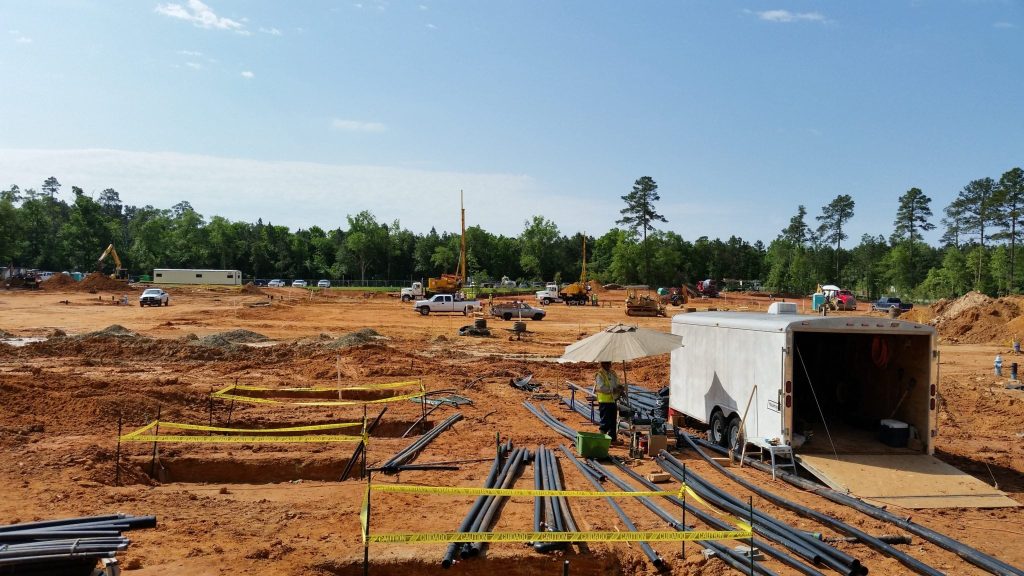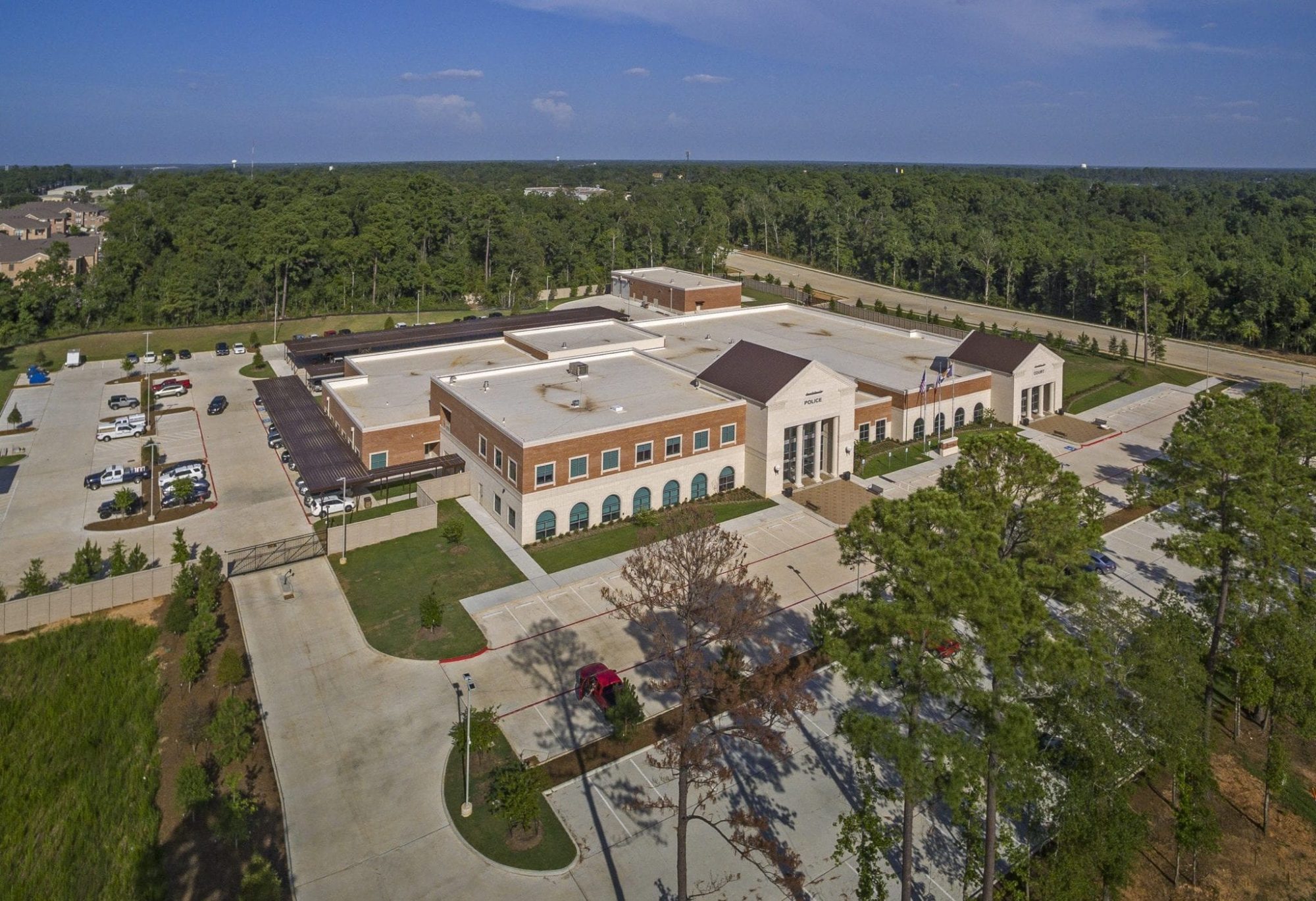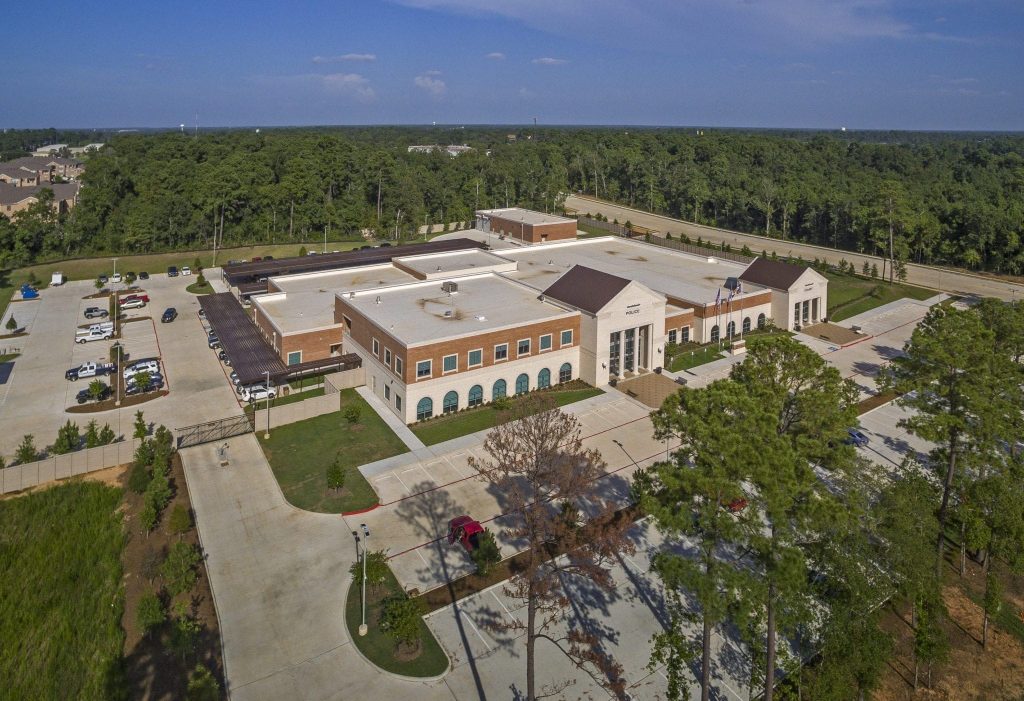
A Case Study of the Hybrid Ground Source Heat Pump HVAC System – Conroe Police Department & Court Facility
In early 2014, the Conroe, Texas police department decided to move from their 16 year old, 36,000 square foot headquarters building to a new, larger and more energy efficient facility. DBR teamed with PGAL Architects to provide the MEP design services for the new facility. The proposed 71,000 square foot facility consisted of a two-story police and court building and a SWAT building. In a meeting with the police chief, architect, general contractor and other team members, the police chief expressed his dissatisfaction with the high energy costs of the old building. He indicated the need for more energy efficient systems especially the HVAC system. DBR presented the following three HVAC options to the project team:
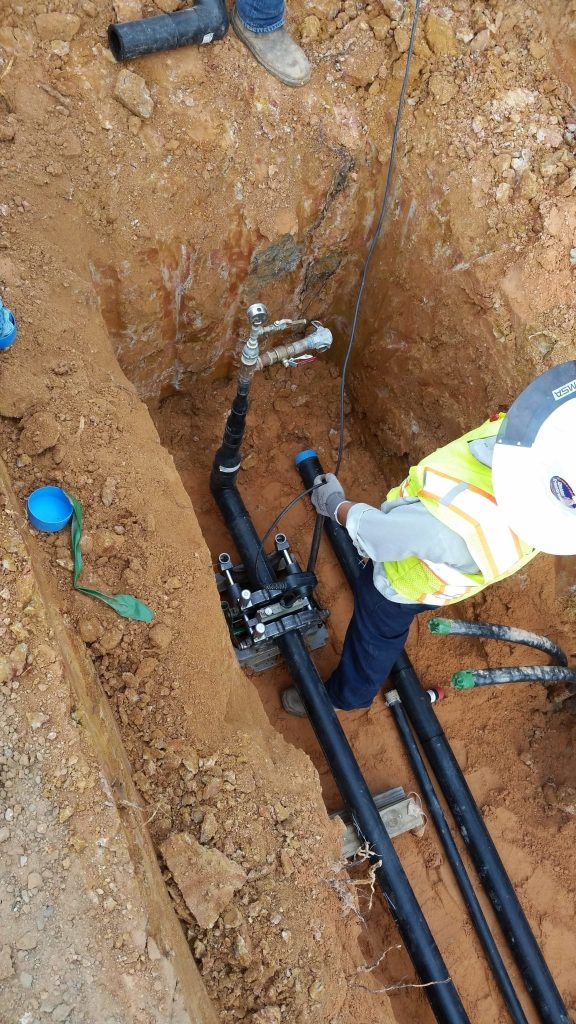
Option #1: Conventional chilled water system: This includes air cooled chillers with variable speed pumping, VAV air handling units, series fan powered VAV terminal units and hot water boilers. This is a very common HVAC system in the region that has reasonable initial construction cost and provides moderate energy savings. However, it was not the most cost effective and energy efficient system over the life cycle of the building.
Option #2: Conventional Ground Source Heat pump system (GSHP): This includes the underground geothermal heat exchanger, water source heat pump units with variable speed pumping. The use of geothermal systems has sustained extensive growth in the region over the years due to its energy savings potential. It can save up to 50% of the energy that would be used by conventional HVAC system. However, the initial cost for this system was much higher than the other options. Additionally, this system requires a larger site for the underground geothermal heat exchanger.
Option #3: Hybrid Ground Source Heat Pump system (HyGSHP): This includes a much smaller underground geothermal heat exchanger, water source heat pump units with variable speed pumping and supplemental heat rejection equipment (cooling tower).
This system was the ideal choice because of its high energy efficiency compared to the chilled water system and its significant economic advantages over the conventional geothermal system. The HyGSHP system requires much smaller and less expensive geothermal heat exchanger than conventional ground source heat pump system. A cooling tower is incorporated into the conventional geothermal loop to provide supplemental heat rejection. It operates during the cooling season to reduce the peak load of the underground geothermal heat exchanger. This leads to more balanced annual load and more stable ground temperature and therefore more efficient heat pump operation over time.
In addition to the initial cost and energy savings analysis, the team reviewed the maintenance requirements of HyGSHP, and the 24/7 operations of the facility. The team decided to move forward the with option #3.
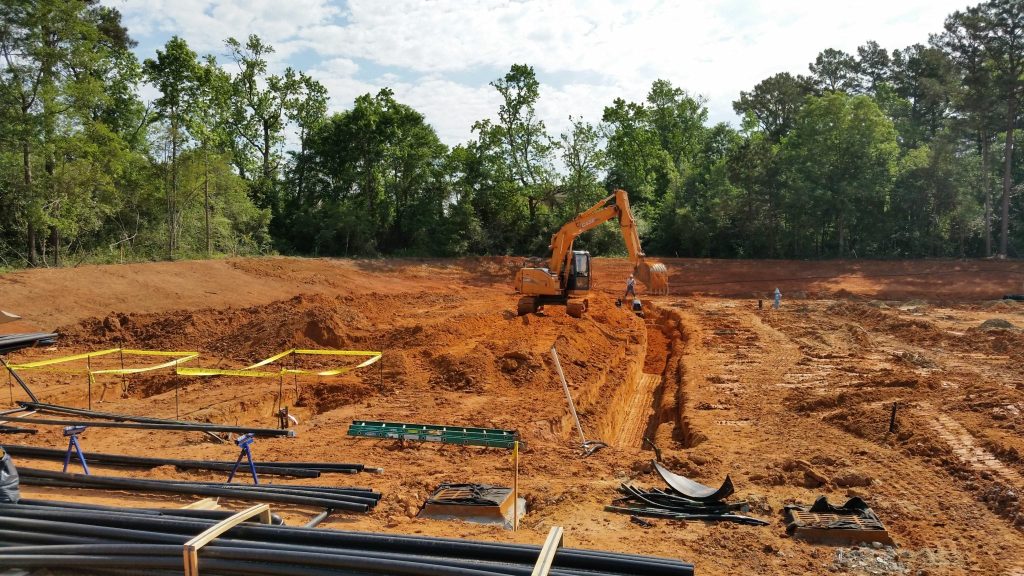
Design Consideration
DBR implemented the following design measures to maximize the energy efficiency of the HyGSHP system:
- Highly efficient and ultra-quiet water source heat pump units with up to 27 EER when used with a ground loop. These units were installed above accessible ceilings to eliminate the need for mechanical spaces.
- High efficiency water source heat pump units for pretreatment of the outside air.
- High Density Polyethylene (HDPE) piping inside and outside the building to reduce the pressure drop in the piping and consequently the pumping horsepower. In addition, HDPE piping reduces the need for expensive water treatment.
- Intelligent variable speed pumps with sensor-less integrated control for more energy efficient pumping.
- Innovative water to water heat pump units for domestic hot water heating. This system uses heat from underground loop for domestic water heating in lieu of conventional gas or electric heat. The estimated annual energy savings for this system was about $4,000.00.
- Geothermal modeling software was used during the design phase and incorporated into the energy management system to optimize the operation of the system. This software analyzes the data from the system components in conjunction with the weather data and ground temperature to optimize the use of the cooling tower and balance the underground geothermal heat exchanger temperature.
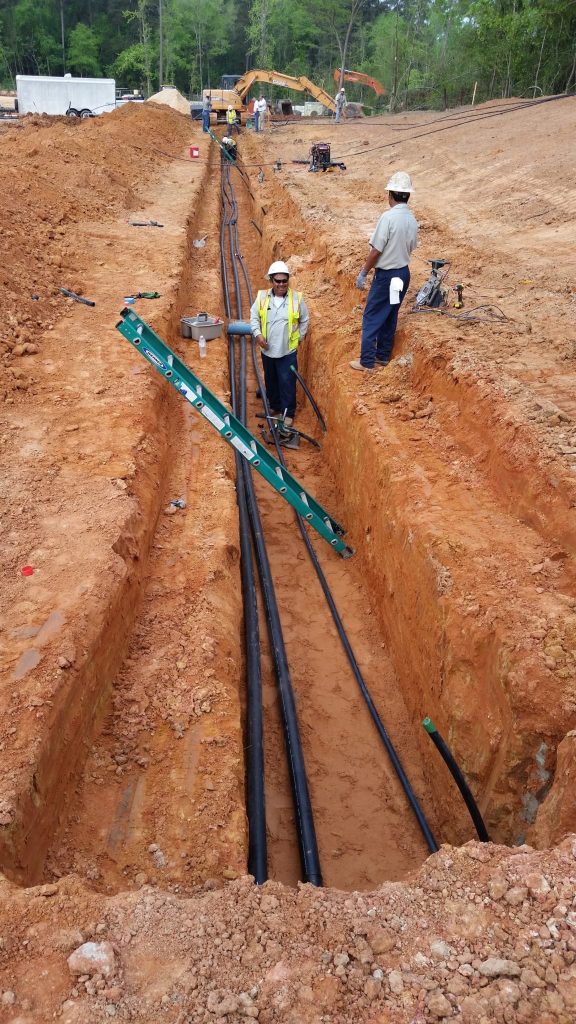 System Performance & Results
System Performance & Results
Building energy consumption is often measured by the Energy Usage Intensity (EUI) which is the amount of energy used (in kBtu) per square foot per year. To calculate the EUI for the Conroe police and court facility, the owner provided DBR with the utility bills for the first 12 months of occupancy between July 2016 and June 2017. Based on these bills, the calculated site EUI is 54.24 and the total annual energy cost is $95,530.00 at an average cost of $0.08 kWh. According to 2016 Energy Star benchmark data for Police Departments and Fire Stations, the average EUI for these facilities is 88.3. The use of the Hybrid Ground Source Heat Pump system contributed to a 38.57% energy usage savings when compared to Energy Star benchmark. This represents an estimated annual energy cost savings of $36,850.00.
Conclusions
By choosing the Hybrid Ground Source Heat Pump system and incorporating the design measures described above, the DBR design team helped the Conroe Police Department save an estimated energy cost of $36,850.00 per year when compared to the Energy Star benchmark of similar facilities. Additionally, due to final scheduling and adjustments of the Energy Management and Control System (EMCS) we expect the annual energy savings to increase after the first year of operation.
